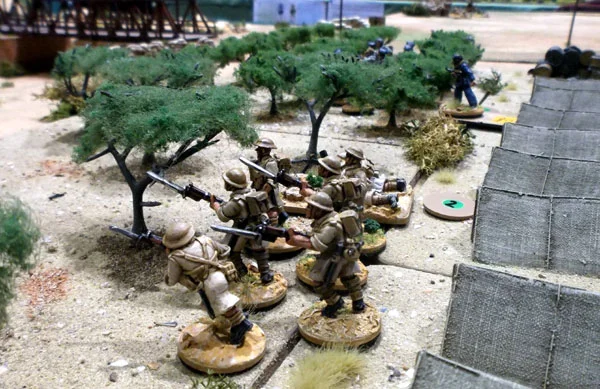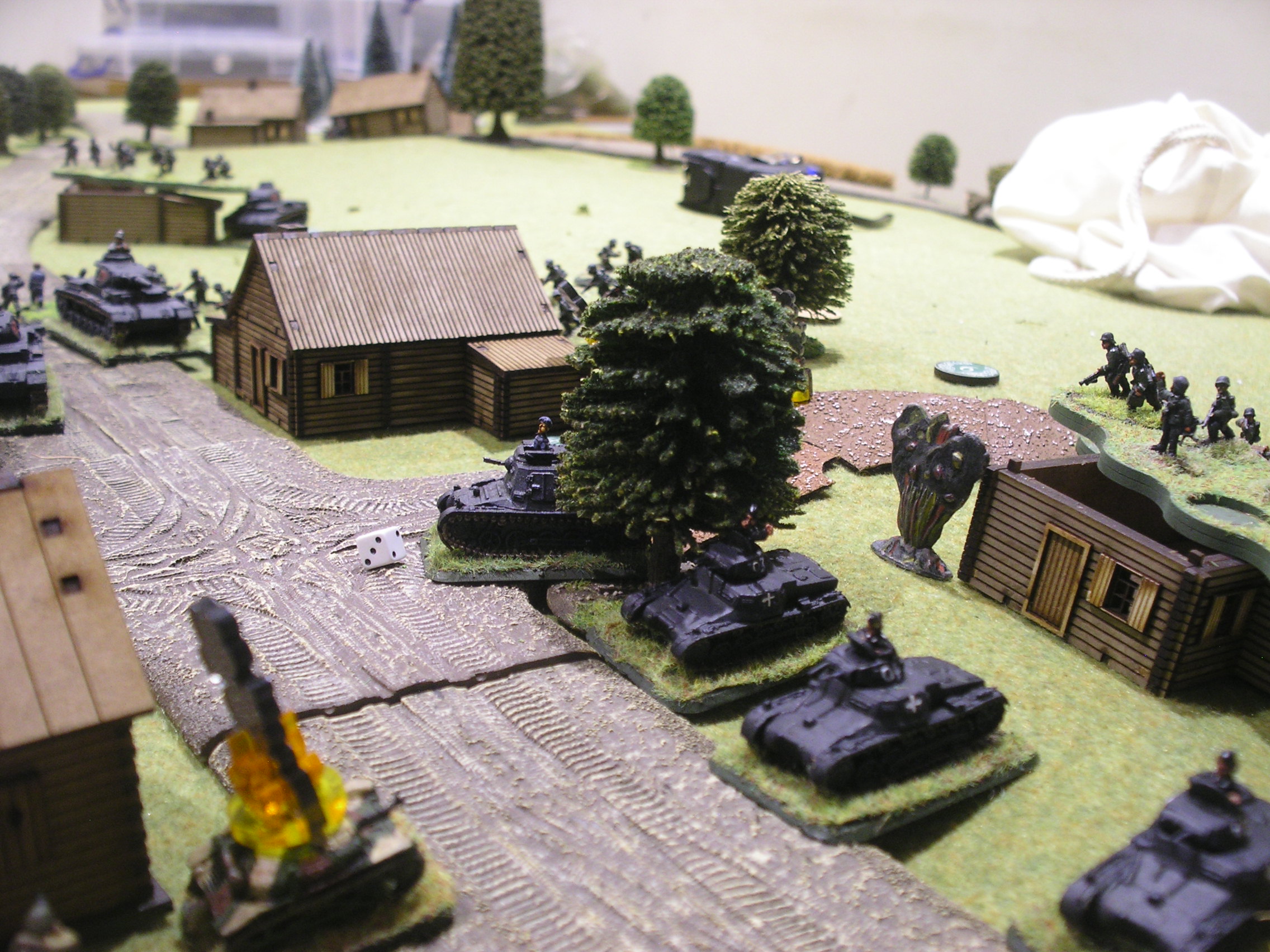In order to launch the Ardennes Offensive (Battle of the Bulge) the germans had to make a drain in their forces in other areas to assist the large build up in the Ardennes.
Last Saturday I happened to be in command of one such drainage patrol... but sad as things can be I wasn't going to find the trip to the Ardennes all that easy.
Just as our convoy had found the main road north we encountered fierce opposition of some quite unexpected american troops lying in wait. Just were they came from or what they were doing there remains uncertain.
Our reconnaissance bikes were abruptly blown apart at the head of the convoy, at the combined effort of a Stuart tank lying in wait by the roadside and some American G.I's.
Next a bloody Sherman entered the fray, but our StuGIII was quick to send a shot at the it, forcing it to retreat.
I tried to get my kübel up to the bikes to regroup the men and lead from there. Sadly the rest of the bikers got killed before I got there. I took my kübel to the side and ordered the SS we were accompanying out of their trucks.
After a quick discussion with the SS Scharführer we send the Panther and the halftracks around the flanks. This way we hoped to force the opposition to rout or at least move around to their discomfort.
A whizzing sound made our blood freeze for some seconds and the smoke from the StuGIII had me shake my head and take a second look... it was gone! Blown to smithereens!
I ordered the MG's to set up in a nearby buildup and took command of the SS troops. I ordered the Scharführer to stay behind and direct the mortar fire against the crossroad.
A chain of blasts sounded as the Panther took several direct hits from a bazooka team lying in wait at the cross. Ernst - commanding the Panther - must have thought there was more than bazookas to the blast as he promptly backed the Panther away.
Tough opposition indeed. The recce units had gotten around the side of the Sherman and Stuart only to detect an entire platoon lying in wait behind the hill. Finding the trigger and the reverse gear at the same time proved hard and the recce unit got shot up. One 250 blew up, one ran off and the last one backed and fired.
By now I had gotten two sections of the SS to the crossing and the last one was out of my reach.
These young boys had the best equipment the Reich had to offer. And thank the almighty for that! Because on the other side of the road another US platoon was heading our way. I ordered the boys to open fire as soon as the platoon (or a significant part of it) was out in the open.
Four G.I's dropped instantly, never to get back up. The other – clearly inexperienced – grabbed for their rifles not knowing where to shoot or how to do it.
The Stuart had detected our presence in the woods and started shelling us. We took some casualties. I quickly inspected the wounded men and instructed those that weren't badly hurt to get back in the fight. No one could get through to us at this point so we had to do our best to survive. Luckily my talk worked and they kept the spirit for a while.
Without any warning I suddenly saw Ersnt bursting through the woods going down the road and into the cross. The panther was roaring and I had no idea what he was doing. My radio had a thick bullet hole in it so I had no idea what was going on anywhere.
He turned the corner and kept going down the road, when suddenly an ear deafening crack sounded. The engine of the panther no longer roared. I don't know exactly what happened, but I saw plenty of G.I's running out of the smoke from the wreck.
In the distance I could hear the rumbling of a Sherman making it's way. As I had no way of knowing whether it was the one we saw before or perhaps reinforcements, I ordered retreat.
With the rest of the SS section I put up a tough defence while the other SS ran back. Eventually we couldn't hold the position any more and we hurried back through the thick of the smoking StuG. The direction the wind was blowing didn't give us the best cover though and soon we had to make a run for it.
It quickly became obvious that we had taken quite heavy casualties with regards to materiel. Most of men were alive, but some were severely wounded.
I ran to the MG's and repositioned one them to cover as wide an area as possible and ordered the rest of the men to start embarking in the trucks and getting the hell out of there.
Our 250/1 came racing by with smoke coming out of the back. The crew informed us that the rest of the halftracks were lost after a toe-to-toe dance with the Sherman and some infantry.
I then ordered the MG's to abandon their position and get into a truck. The last SS section was beyond my shouting distance and we had to leave them behind.
The Blitz drivers got the pedals to the metal and hammered out of the place. This encounter had cost us way too much. A StuG, a Panther, two 25+'s and 8 motorbikes! And that's not counting the loss of men!
I think we'll have to find another route to the Ardennes....
The forces:
Americans: two full platoons, two HQ sections, four Big Men, a sniper, bazookas, Sherman M4 and Stuart - everything but the vehicles deployed hidden
Germans: one SS zug, one Panther D, one StuGIII, three Sdkfz 250, ten infantry on motorbikes, two MMG, three 50mm mortars, four Blitz Trucks, one Kubel. Four Big Men.
Amokfigur


















































































